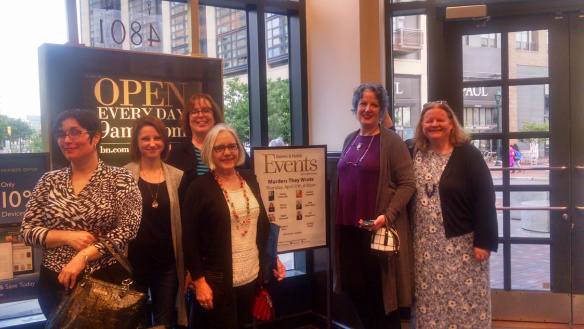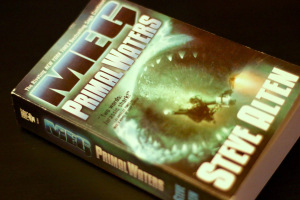Mostly based on the video lecture Mapping Memory in the Brain.
Even in the distant past, before modern medicine, doctors knew that learning, understanding and memory take place in the brain, because people with head injuries have problems with them, but people with injuries to other parts of the body do not.
We know what the brain looks like from dissection; a doctor will cut off the top of the skull of a dead body, remove the brain, and draw pictures of it or take photographs of it.
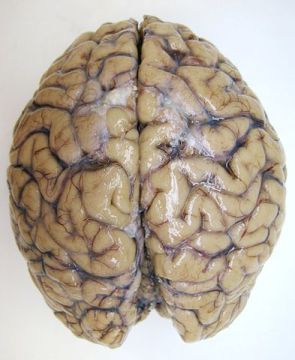 A human brain photographed from above. Image by Wikimedia Commons user Jensflorian, Creative Commons Attribution Share-Alike.
A human brain photographed from above. Image by Wikimedia Commons user Jensflorian, Creative Commons Attribution Share-Alike.
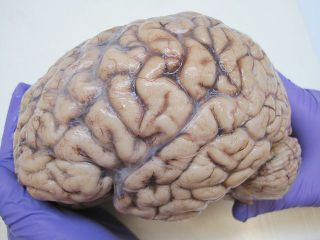 A human brain seen from the side, held by a person wearing blue gloves. Image by Wikimedia Commons user Jensflorian, Creative Commons Attribution Share-Alike.
A human brain seen from the side, held by a person wearing blue gloves. Image by Wikimedia Commons user Jensflorian, Creative Commons Attribution Share-Alike.
Particular parts of the brain are for particular mental tasks
Starting in the 1860s, doctors looked at the brains of people with particular mental difficulties, after those people had died. They found that certain mental problems go along with damage to particular parts of the brain.
A group of patients could understand spoken language just fine but could not express themselves, even though there was nothing wrong with their mouth, throat or vocal cords. It turned out that all of these patients had a lesion (a dent or a hole) at a particular location on the brain surface.
Another group of patients had the opposite difficulty: they could use language to express themselves, but they could not understand when another person was speaking, even though their hearing was fine. These patients all had a lesion on another particular part of the brain surface.
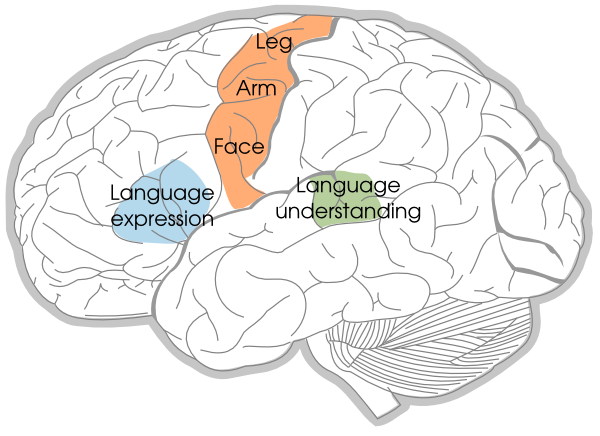 A diagram of the left hemisphere surface of the human brain. The image is derived from Brain Surface Gyri by Wikimedia user James.mcd.nz, Creative Commons Attribution Share-Alike.
A diagram of the left hemisphere surface of the human brain. The image is derived from Brain Surface Gyri by Wikimedia user James.mcd.nz, Creative Commons Attribution Share-Alike.
Doctors have found other ways to learn about the brain; one way is to cut off the top of the skull of a living, awake patient under only local anaesthetic (hopefully they only did this to patients who needed brain surgery anyway!) Then the doctor could poke the brain with an electrode providing a mild electric jolt, to see how the patient reacts.
Jolts to a particular area of the brain surface, called the motor area, lead to sensation or movement in particular body parts. Jolt one particular point on the brain and the patient feels tingling in their left leg, jolt another point in the motor area and the patient sticks their tongue out. If you switch to a new patient and stimulate the same part of the brain, you get the same response.
There are several types of memory, located at different parts of the brain.
Short term memory: for example, remembering the name of someone you just met, or what you had for breakfast this morning, or the instructions for a piece of Ikea furniture that you’re trying to put together.
Scientists don’t know what region of the brain short term memory belongs to, or if it is located at a specific part of the brain at all.
There was a patient known as HM who, after having parts of his brain surgically removed, had no short term memory. He could carry on very short conversations (of 30 seconds or so) – he would respond in the usual way if someone said ‘hello’ or something like that. But if the person he was talking to left the room and came back a minute later, he would not recognise them, and would have no memory of ever having seen them before.
He could remember his life before his surgery perfectly well, but he was unable to form any new memories. If a person can’t form short-term memories, they can’t form long-term explicit memories either.
There are two types of long-term memory: explicit memory and muscle memory. They are located in completely different parts of the brain.
Explicit long-term memory: for example, remembering facts you learned years ago in school, or what you had for breakfast on the morning of your wedding. It’s located in a region deep inside the brain (the hippocampus and the medial temporal lobe). It requires a conscious effort to recall.
Muscle memory or motor memory or implicit memory: is a type of long-term memory for movement. It doesn’t require a conscious effort to recall. It’s located in parts of the brain called ‘the Amygdala, Cerebellum, and reflex pathways’. An amazing amount of skills are in muscle memory, such as: riding a bike, typing, writing, walking, playing a musical instrument.
Patient HM, who was unable to form short-term memories, was nevertheless able to develop new motor skills. When he was asked to practise drawing a star each day for several days, he got very good at it, although he believed that he had never done the task before in his life.
Advertisements Like this:Like Loading... Related

